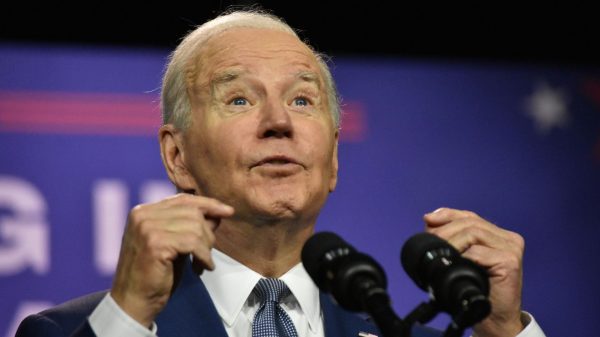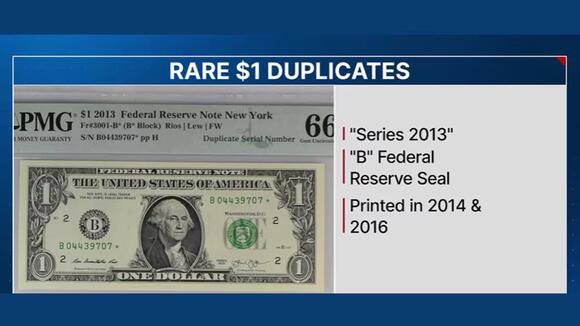Accelerating digital finance for inclusive development

Dr. Atiur Rahman:
We have learned by force during the Corona crisis that there is no substitute for inclusive financing to keep the real economy strong. Inclusive financing refers to making money available and affordable to all. Thanks to the fast-growing digital technology, the drive for financial inclusion in most countries including Bangladesh has gained pace. In particular, the omnipresence of mobile phone connectivity has increased the opportunity to provide new innovative financial services to many, which was simply unimaginable earlier. Following the global financial crisis of 2007-08, the importance of increased money flow has become apparent in many parts of the world for the development of real economies. The performance of Bangladesh has been more impressive than others in the landscape of financial inclusion. The country opted for more of the medium and long-term developmental banking unlike short-term finance for the sake of financing with unlimited quantitative easing.
The financial sector (during 2007-08) was awash with unprecedented liquidity without touching the ground. This was, indeed, ugly finance accelerating economic inequality. Economic inequality increased at such a speed that a social movement named “Occupy Wall Street (OWS): We are the 99%” quickly developed to challenge the Wall Street-based financial system. In contrast, Bangladesh tried to take the money with its bullock carts to reach the farmers and SMEs to strengthen the base of social pyramid. In keeping with the government’s goal of building a digital Bangladesh, initiatives had been taken to create a new model of development-oriented central banking through opening ten-taka accounts, initiating school banking for students, introducing mobile and agent banking, providing incentives and instructions to private sector banks to provide agricultural loans, and finally, bringing the issue of social responsibility into the mainstream of the banking system. Its benefits have been able to reach the doorsteps of ordinary people, and as a result, the effects of the global financial crisis have not been felt in our economy that much. The volume of consumptions has, in fact, increased leading to higher domestic demand. In the process, the annual increase in nominal GDP per capita in Bangladesh has been the highest (9.4%) in emerging Asia during the period 2011–2018. The trend continued even during the fiscal year 2019-20, albeit a bit slower.
As a result, the macro economy of Bangladesh remained quite stable throughout the last decade. The volumes of both agricultural and SME loans increased during this decade. Medium and large enterprises in the export sector also benefited significantly. In addition, Bangladesh Bank has tried to control the informal transmission of foreign remittance (hundi) by digitising and simplifying the regulations. The government has also been providing two per cent cash incentive to the remitters to boost remittance. As a result, both export and remittance incomes increased significantly leading to higher foreign exchange reserves. Taka remained strong throughout this period. Until very recently, both exchange rate and inflation remained stable riding on the stronger external economy. However, due to rising prices of oil and other commodities in the world market, both have been destabilised. The inflation may remain stubborn for quite some time mainly due to supply-chain disruptions. Moreover, the central bank and the government have had to inject a lot of liquidity into the economy to confront the Covid-19 pandemic. All these may have been pushing inflation up. Yet, there is no risk to financial instability. However, regulators should keep their eyes open to this uncertain unfolding of the economy.
There was no dearth of appreciation for Bangladesh’s macroeconomic management despite some governance challenges. Gerald Epstein, a Professor at Massachusetts University, applauded ‘Developmental Central Banking’ in Bangladesh in his article published in the “Review of Keynesian Economics” in 2013. In that piece, he said that Bangladesh Bank innovated developmental central banking going out of box of neoliberal paradigm to improve the living standards of common people to cope far better with the global financial crisis. According to Epstein, the main features of this strategy included campaign for financial inclusion, emphasis on increasing agricultural credit, innovation of special loan for sharecroppers, support for green loans, refinancing for women entrepreneur development, special loan support for export industry, issuing guidelines for green banking, and above all monitoring end uses of the loans. This kind of praise for Bangladesh and the central banking of Bangladesh in the world-renowned international journal of economics is indeed encouraging for the central bankers. However, these innovations in our financial sector did not occur overnight. We had to move forward through gradual experimentation. What is more encouraging is that Bangladesh Bank did not abandon that path. However, this does not mean that there is no problem in the banking sector of Bangladesh. Obviously, there is no denying the fact that there are defaulted loans of various types, the irregularities of the board of directors, immoral activities of the bankers, and the lack of good governance in some banks. Nevertheless, there is no reason to underestimate the role of the banking sector, especially the developmental central banking, in taking the economy forward.
Despite these limitations, a substantial amount of finance has been going the bottom of the social pyramid. Amounts of agricultural loans are increasing. The remittance income is reaching out to the beneficiaries in the shortest possible time. Even a beggar in Bangladesh is now using mobile banking services. Rickshaw pullers do banking so often. In addition to substantial CSR support during the Corona Crisis, everyone, including the poor, was able to continue their transactions 24 hours a day thanks to the new age of digital banking. This tremendous pace of financial payments has also kept our economic growth so fast. This has not been possible in many countries. Back in 2009 when the global financial crisis was in full swing due to the unsustainable financing of some developed countries, we adopted the strategy of inclusive financing as a complement to the ‘Digital Bangladesh’ campaign of the government. The central bank and the entire banking sector were involved in the initiative to change the mindset of their own human resources. I believe that trend is still intact. Our goal was to touch the ground, i.e., to keep the productive sector strong by keeping domestic consumption and demand vibrant. We made this strategy a part of the central bank’s strategic plan. In addition to the bankers, we took the initiative to formulate strategic monetary and credit policies (especially agricultural and SME loan policies) by talking to all the stakeholders involved in the economy. We took new initiatives to increase the flow of money to the deprived sectors and groups. The new technology of the new age especially helped us in this regard. We have been committed to the development of information technology infrastructure in the entire banking sector, including the central bank. As a result, the scope of providing non-branch online/mobile phone/ smart card based financial services widened very fast. In addition, a culture of comprehensive discussions with stakeholders has been ingrained before developing new guidelines or circulars for financial inclusion.
At the same time, the central bank has continued to expand the scope of mobile and agent banking through rural branches/sub-branches/booths, and agents. Many new apps have been developed to ease the financial services. Moreover, initiatives have been taken to apply “macro-prudence”, or collective prudence, to green financing. Low-cost refinancing strategies have been adopted for SMEs and green entrepreneurs in this respect, while prioritising women entrepreneurs. This strategy has been particularly fruitful in this pandemic. The government and Bangladesh Bank have demonstrated their expertise in the strategic use of digital financing in the implementation of their stimulus packages. Thus, Bangladesh has done much better in recovering from this crisis than many neighbouring countries. The speed of this recovery could have been further enhanced if we had vaccines in place at the right time. The global leaders have failed in this respect. Yet our leadership has never hesitated to collect vaccines in any way possible, and our economy is also getting the benefits of it. In this crisis, the government has shown its prudence by giving the banking sector a priority in vaccination. There is still uncertainty surrounding COVID-19. Transmission of this virus is increasing in the developed world. And on this open shore, Bangladesh also must be very careful. The government and the central bank must keep a close eye on agriculture, the mainstay of our economy. The time has not yet come for the central bank to get away from the method of providing additional money to the government through expanding its balance sheet. However, the pressure on Taka is increasing. The dollar is appreciating because of rising imports. Remittances are lower than that of last year. So, the central bank must be very prudent in ensuring the stable transaction of foreign currency. If necessary, the current trend of selling dollars should be continued for some more time.
The whole world knows that the rate of financial inclusion has increased in Bangladesh. In 2018, almost 50% of the adult population in Bangladesh had access to financial services. This opportunity increased by 57% by 2018 compared to the year 2016. Now, this rate may be even higher. To accelerate the use of digital technology, Bangladesh Bank provides an opportunity for mobile-based financial enterprises, or “Fintech”, to operate. This innovative initiative has changed the whole financial ‘landscape’ by making financial services available to people who were deprived of getting them through the conventional banking system. To enhance the digital financing opportunity, the central bank has taken numerous policy initiatives as a part of building digital infrastructures, such as automated CIB, clearing house, national payment switch, BFTN, RTGS, electronic KYC, online integrated supervision, more power transferring to AD branches, introducing mobile and agent banking guidelines, etc. We are now enjoying the benefits of this policy innovation. Some banks have already started adopting blockchain technology. All banks are now using core banking solutions. All internal and external banking operations are now done online. As a result, Bangladesh continues to show its success in providing financial services to many.
According to ‘Financial Access Survey’ in 2020, there were 8.99 branches of banks for every one lakh adults in Bangladesh. In 2014, there were 8.61 branches. The number of ATMs for the same population was 10.18 in 2020. In 2015, it was 7.09 ATMs. In 2020, there were 8,141 mobile agents per one thousand kilometers, while in 2015, there were 4,408. Again, in 2020, mobile transactions accounted for 20.45 per cent of GDP, compared to 11.026 per cent in 2015. Besides, almost two crore farmers and extremely poor people have ten-taka account. And at least one person in every household has mobile banking account. Therefore, even during the strict lockdown, the government did not face any difficulties in sending government assistance to the garment workers as well as to the marginalised people under the “Social Safety Net” programme. And, as a result of mobile banking and agent banking, a mini revolution has taken place in financial inclusion. In this case, we cannot deny the strong leadership of the central bank. Almost 15 million new mobile banking accounts were opened between March and November 2020. About a hundred million people now have mobile banking accounts. The spread of agent banking has also occurred at the same time. In 2020, there were 14 thousands agent outlets, compared to 10,000 a year ago.
From the above discussion, it can be understood that how fast digital finance has expanded in Bangladesh and strengthened the bottom part of the social pyramid. We have learned from this unprecedented experience of financial inclusion, and we are still learning. However, the government and central bank must always be careful when rebuilding the digital infrastructure. There is no scope for hesitation to spend on digital infrastructure so that internet facilities remain stable and affordable. It is important to keep an eye on the policy so that various financial services can be made ‘inter-operable’ which is in the offing. It is important to maintain the confidence and trust of the customers. In this new circumstance, it is necessary to ensure that the customers get maximum protection. Consumer confidence has been severely eroded by the number of fraudsters in the e-commerce world. However, the government is working hard to bring some order in this sector. Therefore, all stakeholders need to be vigilant so that the ability and reputation of digital finance which has been built with so much effort, is not tarnished in any way. Besides, the greening initiatives of Bangladesh central bank need to be further strengthened to implement the financing of the ‘Mujib Climate Prosperity Plan’ which was presented by Bangladesh Premier in COP-26. Our capital markets can also operate long-term Green Bond as well as can encourage small and medium enterprises to invest there. All in all, we have to walk along the path of climate-friendly inclusive financing.
The author is the Bangabandhu Chair Professor of Dhaka University and former Governor of Bangladesh Bank





























Leave a Reply